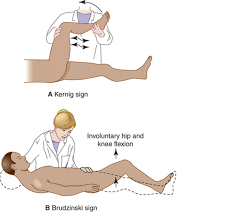Varus Stress Test of Knee Joint
Table of Contents
What is a Varus Stress Test of the Knee Joint?
The Varus Stress Test is a physical examination maneuver used in orthopedic medicine to assess the stability and integrity of the knee joint. It is one of several tests performed during a clinical examination to evaluate for injuries or instability in the knee.
A varus stress test indicates a lateral joint line gap.
Purpose
The varus stress test to assess the integrity of the LCL.
Test position
Supine position
Technique
The varus stress test at 20-30 degrees of knee flexion is a proper workhorse test performed in the evaluation of posterolateral instability of the knee. This test isolates the function of the fibular ligament. In practice, the varus opening of the knee should not increase by 20-30 degrees of flexion if the fibular collateral ligament is intact. If other structures such as the popliteus tendon or patellofibular ligament are injured at the same time as the fibular ligament tear, the varus opening increases.
Assessment of varus instability can be quite accurate in the hands of an experienced clinician. A subtle increase in the opening of the varus can usually be assessed to determine the degree of instability. On stress scans, steps of 2.7 mm in the lateral compartment indicate a tear of the fibular ligament, while steps of 4 mm between the lateral compartments indicate a complete posterolateral corner injury. To perform a load test at a 30° knee flexion angle, the leg is placed on the examination table with the knee flexed 20°-30°. The fingers are then placed over the joint line as the distal femur stabilizes.
Varus tension is then applied to the knee while supporting the foot and ankle. After that, the fingers can estimate the size of the opening. As with the medial side of the knee, it is important not to grasp the distal aspect of the tibia when performing this test and to apply tension through the foot and ankle to determine the amount of increased rotational instability and to determine the true size of the lateral section.
Diagnostic Accuracy
Sensitivity: 0.25 (“Evaluation of Knee Instability in Acute Ligament Injuries”).
Significance of the test
The lateral collateral ligament is an important source of load resistance in the knee because it attaches to the head of the femur and fibula. Because the fibular nerve also surrounds the tricuspid nerve, any injury that causes leverage on the knee can potentially stress the tricuspid nerve as well. Other tissues at risk for these injuries include the PCL and arch complex, especially when the force of the injury is combined with stretching.
At 0 degrees, there is usually no gap created by varus tension, so if a gap occurs during the test, a serious injury is suspected, i.e. ACL, PCL, LCL, capsule. There is a gap in the 30-degree position because the LCL and other structures are no longer maximally stressed. The LCL is a very thick fibrous ligament that can be palpated with body tension in a figure 4 position (just think of the attachments!). Because the mechanism of injury is reserve strength (due to protection of the opposite lower extremity), isolated LCL injuries are relatively rare.
FAQ
A positive varus load test at 0° of knee flexion usually indicates severe damage to the posterolateral angle and cruciate ligament.
The varus load test at 20-30 degrees of knee flexion is a true workhorse test performed in the evaluation of posterolateral instability of the knee. This test isolates the function of the fibular ligament.
A positive test is accepted when pain or cracks are noted in the lateral knee when the knee is in 20-30 degrees of flexion.
Reference
Varus Stress Test. (n.d.). The Student? Physical Therapist. https://www.thestudentphysicaltherapist.com/varus-stress-test1.html
LaPrade, R. (2017, May 10). Varus Stress Test at 0°. Robert LaPrade, MD | Minnesota Knee Specialist | Twin Cities, Minneapolis-St.Paul, Edina, Eagan. https://drrobertlaprademd.com/varus-stress-test-at-0d/






